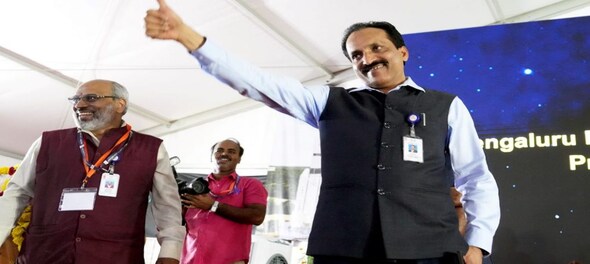
Chandrayaan-3 made a soft landing on the Moon on Wednesday. This remarkable achievement not only establishes India as the first nation to land a spacecraft on the south pole of the moon but also places the country in a select group of countries with successful lunar missions.
In an interview with news agency ANI, ISRO chief S Somnath shed light on the reason why they chose the Moon's south pole for this mission. He stated that the strategic choice of the south pole, at nearly 70 degrees latitude, offers distinct advantages due to “being less illuminated by the sun.” He added that this unique characteristic enhances the scientific potential of the mission, allowing for deeper exploration and analysis.
“Scientists who are working on the moon showed a lot of interest in the south pole because ultimately human beings want to go & create colonies and then travel beyond. So, the best place is something we are looking for and the South Pole has the potential to be that,” he added.
#WATCH | ISRO chief S Somanath on why ISRO chose the South Pole of the moon for Chandrayaan-3's landing; says, "We have gone closer to the South Pole which is 70 degrees almost. The South Pole has a specific advantage with respect to being less illuminated by the sun. There is a… pic.twitter.com/hpEV2MMcav
— ANI (@ANI) August 24, 2023
The challenges posed by the lunar south pole are formidable, with treacherous terrains and freezing temperatures. The region's permanently shadowed craters have not seen sunlight for millions of years. Previous attempts by various nations, including Israel's Beresheet spacecraft in April 2019, India's Chandrayaan-2 in September 2019, and Russia's Lula 25 in August 2023, to land on the South Pole have all met with failure.
The allure of the exploration of the lunar south pole stems from its potential as a reservoir of invaluable resources. Scientists believe that water ice lies within the shadowed craters, a discovery with profound implications for future space exploration. This water could be harnessed to generate drinking water, oxygen and hydrogen for rocket fuel.
The region's extremely low temperatures could also preserve substances, offering insights into the early solar system and potentially harbouring volatile compounds like methane and ammonia for future human exploration.
Additionally, the lunar south pole hosts the colossal South Pole-Aitken Basin, the moon's largest impact basin. Analysing this feature could unravel the moon's origins and evolution.
Moreover, this region holds significance for radio astronomy, as the area below 30 MHz on the electromagnetic spectrum remains largely unexplored due to terrestrial radio interference. The lunar south pole, especially around Malapert Mountain on the far side, holds promise as a potential site for radio astronomy.
The Vikram lander of Chandrayaan-3, having accomplished the historic landing, will now embark on a series of scientific operations on the lunar surface. Instruments like the chaSTE payload, ILSA payload, Langmuir Probe (LP), and Pragyan Rover will conduct a range of experiments. These include measuring thermal conductivity, seismicity, near-surface plasma density, and mineral composition of the lunar surface. The planned operational span of the lander and rover is one lunar day, equivalent to approximately 14 earth days.
(Edited by : Sudarsanan Mani)
Check out our in-depth Market Coverage, Business News & get real-time Stock Market Updates on CNBC-TV18. Also, Watch our channels CNBC-TV18, CNBC Awaaz and CNBC Bajar Live on-the-go!


Fight of heavyweights in Sambalpur where farmers, weavers hold the key
May 17, 2024 12:25 PM
Odisha: Fight of heavyweights in Sambalpur where farmers, weavers hold the key
May 17, 2024 10:22 AM
Lok Sabha Election 2024: What rural Delhi wants
May 16, 2024 10:10 PM
Over 50 onion farmers detained in Nashik ahead of PM Modi's visit
May 16, 2024 11:14 AM

